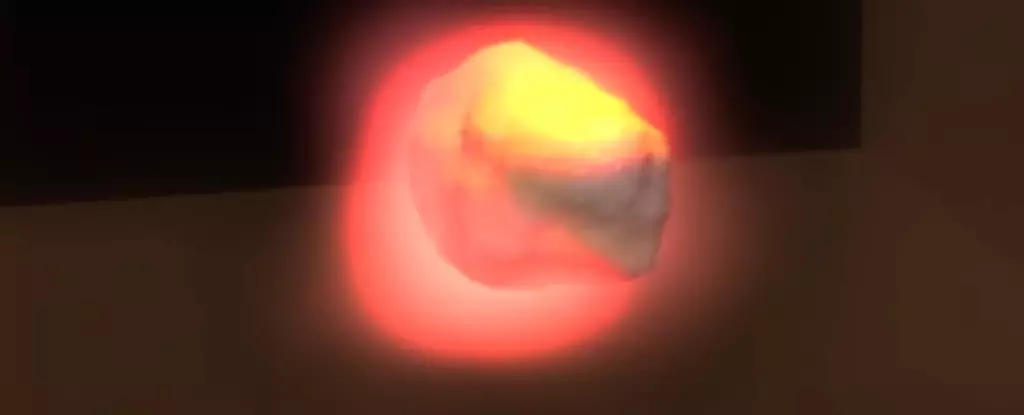NASA’s Curiosity rover has recently made a compelling discovery that could alter our understanding of Martian biology. Scientists have identified the largest organic molecules ever found on the red planet, raising critical questions about the potential for past life on Mars. While organic compounds are not definitive indicators of life, they play a significant role in the biological framework we understand here on Earth. Specifically, the findings highlight the potential existence of long-chain carbon molecules, which, in terrestrial contexts, are often associated with living organisms. The discovery is not only a testament to Curiosity’s ongoing mission but also to humanity’s unyielding quest to unravel the mysteries of our neighboring planet.
The Significance of Organic Molecules
Organic molecules such as alkanes—hydrocarbons made from long strings of carbon and hydrogen—were found in a rock sample named Cumberland at Gale Crater, believed to be an ancient lakebed. This discovery is groundbreaking, as it represents a fresh avenue of inquiry into the conditions of early Mars. Earth hosts complex ecosystems that rely heavily on carbon-based life forms, and finding similar building blocks on Mars suggests that similar conditions may have once existed there. The identification of molecules like decane and dodecane—each comprising chains of carbon atoms—provides vital clues that could indicate not just chemical processes but also potential biological ramifications.
Challenges in Analyzing Martian Samples
Despite the tantalizing nature of these findings, the challenge remains: how to interpret the evidence adequately. The complexity of microbial life means that finding direct indicators of Martian life is a daunting task. As astrobiologists point out, uncovering definitive proof of ancient life requires sophisticated instruments that cannot be deployed on the rover. The findings from Curiosity’s Sample Analysis at Mars (Sam) instrument show that although researchers initially sought amino acids—the pivotal building blocks of proteins—they stumbled upon alkanes instead. While disappointing for some, this unanticipated discovery is still captivating in its implications.
A Broader Context: The Search for Life Beyond Earth
The excitement surrounding these findings is not an isolated event. Other missions, particularly the Perseverance rover, are simultaneously exploring different areas of Mars with the aim of collecting samples that may further elucidate the planet’s biological history. In recent months, evidence has surfaced of rock features elsewhere on Mars that seem to have been shaped by similar sedimentary processes as those found in Earth’s lakes. This builds a potentially interconnected narrative of Martian habitability, suggesting that our neighboring planet may have been more Earth-like than previously thought.
Future Endeavors: The Mars Sample Return Mission
The forthcoming Mars Sample Return mission symbolizes the next crucial step in the pursuit of understanding Martian life. A collaboration between NASA and the European Space Agency, this mission aims to transport collected Martian samples back to Earth where state-of-the-art laboratory techniques can be employed. Such an endeavor raises optimistic prospects: the powerful tools available on Earth could finally confirm or refute the existence of biosignatures once and for all. Nonetheless, as of 2023, budgetary critiques have raised concerns about the mission’s viability, prompting the agencies to revisit their plans and explore alternative methodologies.
Deciphering the Origins of Organic Molecules
The organic molecules preserved within the ancient Martian rock samples are crucial for piecing together the narrative of Mars’s past. The scientific community remains divided on whether these alkanes originated from biological activity or were formed through abiotic processes on the planet. This uncertainty amplifies the thrill surrounding their potential implications. While there is a chance that geological processes could account for the presence of these molecules, the sheer longevity and preservation of these samples in the Martian environment bolster hopes for finding fossilized evidence of life.
Hope for Longer-Chain Organic Molecules
While Curiosity has uncovered 12-carbon-long alkanes, the possibility that other, more complex, longer-chain organic molecules may reside in Martian soil remains tantalizing. The notion that such molecules could be biological in origin makes the prospect all the more thrilling. However, the limitations of current instrumentation mean that conclusive evidence may still be some time away. In light of this, the scientific community is eagerly anticipating the return of Martian samples to Earth for advanced analysis, awaiting the day when the secrets of the red planet may finally be unraveled.
In the quest to understand the potential for life on Mars, each discovery acts as a stepping stone, illuminating our path to the stars. The organic molecules harvested from Martian rocks provide tantalizing evidence of a world that may once have harbored life, reshaping our understanding of biological possibilities beyond Earth. It’s a chapter of exploration that inspires both excitement and curiosity as we strive to answer one of humanity’s most profound questions: Are we alone in the universe?


Leave a Reply